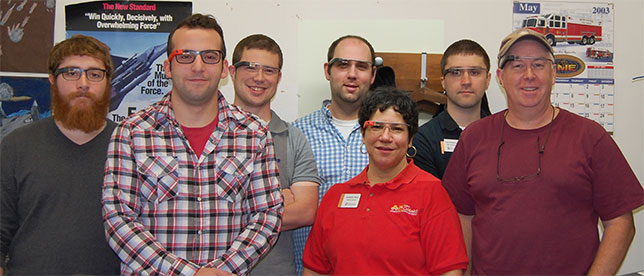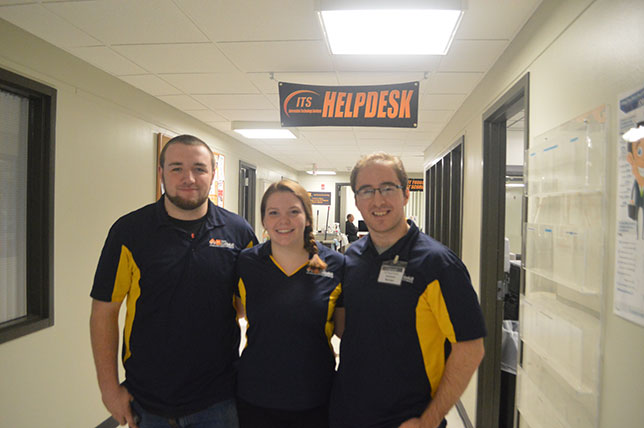Getting Started with Google Glass
SUNY Cobleskill has embarked on a rigorous pilot using Google Glass for hands-on, experiential learning. To kick off a series of articles chronicling the experience, the institution's CIO shares the origins of the project, the support team involved and the plans that are already unfolding for future campus and corporate collaborations.
State University of New York Cobleskill has made a substantial investment in its academic programs, setting up a state-of-the-art simulation lab, related IT infrastructure and other campus upgrades. And in our efforts to be at the forefront in teaching and learning, we wanted to go a step further — to explore the use of wearable and other video/mobile technologies to support experiential learning in a pilot called Project WAVE-ExSEL.
Around this same time period, however, we also had to outfit a new $40 million Science Building on campus. As a result, we originally did not have the funds available to procure the equipment for the pilot for this academic year. So, we took the time to write and submit for grant funding to make it happen.
Securing the Funding
The grant that we applied for came via the SUNY Innovative Instructional Technology Grant program. The program was established as an outcome of the SUNY Strategic Plan, which made recommendations to leverage the "Power of SUNY" for supporting academic excellence and student success. The vision and concept for a "network of networks" came forward, to include tools and practices that will collaboratively increase efficiency and capacity for SUNY-wide delivery of high-quality instruction. Endorsed by the chancellor, executive vice chancellor and provost and SUNY Board of Trustees, the grant program is open to anyone within the SUNY system seeking funding for solutions that:
- Enhance teaching and learning by providing affordable, innovative and flexible education in a full range of instructional formats;
- Develop instructional talent by creating and supporting communities of practice across disciplines and institutions;
- Support, monitor and embrace research on pedagogical practices to continually improve the instructional practices of SUNY faculty; and
- Extend teaching and learning environments to provide new avenues for development and delivery of collaborative content, courses and programs in New York and across the globe through Open SUNY.
The grant application and review timeline is very aggressive, with submissions due by the first week in March and award notifications going out by the end of May. Awards are in three tiers of $10,000, $20,000 and $60,000. We really hustled to get our application in for the $60,000 award tier. By the end of May, we were notified of our application being selected/funded. Then the real project work started.
The Project and Team
We are extremely grateful for being selected/funded, especially in a challenging budget environment. So, being funded means that we will do our due diligence and show the ROI on this innovative technology project. To that end, we are particularly thankful for the eager, inventive and talented college personnel who will be supporting this project.

The WAVE-ExSEL support staff (from left to right): Rob Dolan, Dustin Gardner, Dan Young, Vinny Basile, Josie Motyl, David Brinkman, Tim McTaggart
SUNY Cobleskill's culture is big on experiential learning. So while the direct beneficiaries of Wave-ExSEL will be those students involved in the pilot programs (in Paramedic and Animal Science programs), we will also be incorporating students in other academic programs — including our Business, IT and Graphic Arts programs — to help with overall logistics of the project. Students in those programs will receive hands on, real-world experience in Web site design, setup and maintenance; assisting in the ITS department service support for video, mobile and wearable tech; video editing; and more. These students will become a locally established cadre of experts, working amongst themselves and with the college faculty in the pilot labs, honing their skills throughout the duration of the project.

The WAVE-ExSEL student team (from left to right): Michael Donovan, Emily Ketchum, John Landis
Faculty Next Steps
The Wave-ExSEL team is working with faculty to integrate the disparate technologies and develop use cases for the integrated technologies. We will also cover the ability to transmit information across campus and external networks; ease of content capture and repurpose/redistribution via video streaming; and initial student instruction regarding procedures, privacy, security and intersection with regulatory matters such as FERPA, HIPPA, etc. From the pedagogical side, we will be focused on discovery and answering:
- Does the use of wearable technology speed acquisition of student competency?
- What effect does the introduction of wearable technology have on instruction and peer (and patient) interaction?
- Does the use of instructor point-of-view video help bridge student understanding of theory to applied practice?
- How does the use of wearable technology translate across different instructional programs (Paramedic Training vs. Animal Hoof Health)?
Answers to these questions will have an impact on our future phases and expansion plans within our campus, with other campuses and with corporate partners.
Thinking of Phase II Now!
Over the course of the project, we will establish a very good number of local faculty and support-staff experts, and we'll be in good position to share and spread the wealth of their knowledge. Our plans are to grow this pedagogy and technology to other academic programs at our campus and for our future partner campuses. We have started to reach out to several sister SUNY campuses in order to think about additional use cases for the integrated technologies in the pilot academic programs, as well as what other academic programs can benefit from the technologies. We also want to work with other campus faculty in defining assessment rubrics specific to the introduction of wearable technology, with the expectation that this pilot will not only be used for future application/reference in other academic programs but also in federal programs that support continuing education in health/medicine, animal/veterinary, science and agriculture as well R&D in using these technologies in assessment while improving teaching and learning outcomes.
Coming Up
The next article in this series will detail SUNY Cobleskill's technology integration efforts.
We have also started soliciting corporate partners who might have interest in integrating wearable, video, mobile technologies with their product and service offerings. They will have readily available campus environments in which to pilot and test out their new/updated equipment, and the campuses will benefit by having a continual stream of new technology to use in our academic programs. We are looking very forward to inventing the future and applying it to our learning and real-world environments.